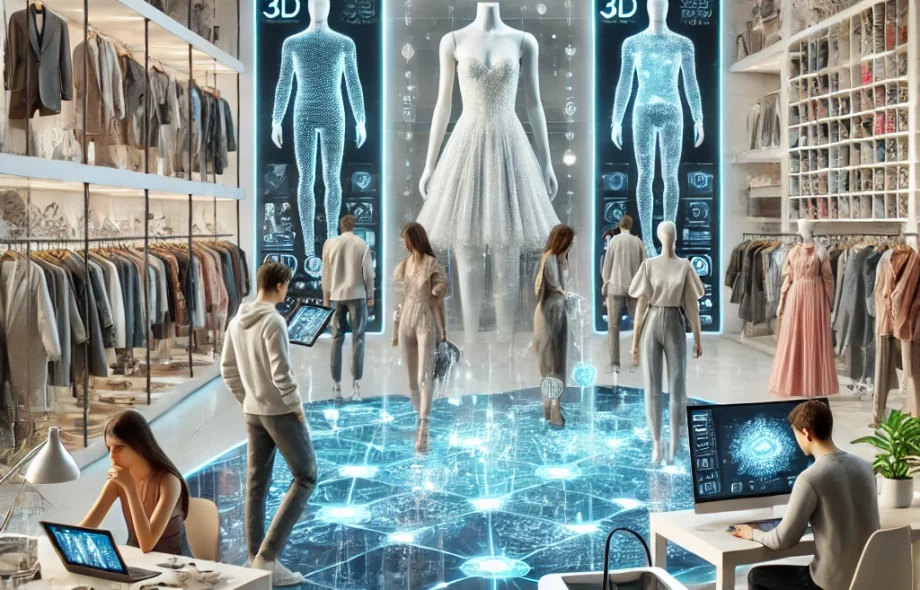The fashion industry is undergoing a significant transformation, driven by rapid advancements in technology. From the integration of AI in design to the rise of online retailing, technology is not just reshaping how clothes are made and sold, but also how they are worn and experienced. This article explores the various facets of this technological revolution, highlighting its benefits, challenges, and the potential it holds for the future of fashion.
Innovations in Design and Production
One of the most exciting developments in modern fashion is the use of Artificial Intelligence (AI) and Machine Learning (ML) in the design process. AI algorithms analyze trends and consumer behavior to predict what styles, colors, and materials will be popular, helping designers create more targeted and successful collections.
3D printing is another technology that is revolutionizing fashion production. This method allows designers to create complex designs that would be difficult or impossible to achieve with traditional methods. 3D printing not only speeds up the production process but also reduces waste, as materials can be printed on demand and to exact specifications.
Sustainability Through Technology
Sustainability is a major focus in the fashion industry, and technology is playing a key role in making fashion more eco-friendly. For instance, blockchain technology is being employed to improve transparency in the supply chain, allowing consumers to trace the lifecycle of a garment from raw material to retail. This not only helps ensure ethical practices but also minimizes the environmental impact by optimizing the supply chain for efficiency and sustainability.
In addition, new textile technologies are enabling the creation of eco-friendly materials from unconventional sources. Fabrics made from recycled plastics, algae, and even milk are entering the market, offering consumers sustainable yet fashionable choices.
The Digital Shopping Revolution
E-commerce has transformed the retail landscape, making it easier and more convenient to shop from anywhere in the world. Virtual reality (VR) and augmented reality (AR) are taking this a step further by enhancing the online shopping experience. Virtual fitting rooms and AR apps allow customers to try on clothes virtually before making a purchase, which helps reduce return rates and increases customer satisfaction.
Social media platforms have also become a powerful tool for fashion brands to engage with their audience, offer personalized shopping experiences, and market their products more effectively. Influencers and fashion bloggers use these platforms to showcase new trends and how they can be styled, influencing consumer behavior on a massive scale.
Personalization and On-Demand Fashion
Technology has made it possible for brands to offer personalized shopping experiences at scale. AI is used to analyze individual customer data and provide tailored recommendations based on past shopping behaviors. This not only enhances the customer experience but also improves the efficiency of the retail process by predicting what products will be popular with which segments of the market.
Moreover, the rise of on-demand fashion is allowing consumers to order customized pieces that are made to their specifications. This not only ensures a better fit but also reduces waste, as clothes are only produced when there is a demand.
Challenges of Technological Advancements
While technology is providing numerous benefits to the fashion industry, it also presents challenges. The rapid pace of change can be difficult for traditional retailers to keep up with, and there is a constant pressure to invest in new technologies to stay competitive. Additionally, the shift towards online shopping and the use of AI can lead to job displacement in traditional retail roles.
Looking Ahead: The Future of Fashion Tech
As technology continues to evolve, its integration with fashion will likely deepen, leading to even more innovative applications and practices. From smart fabrics that change color or texture on command to AI-designed personalized wardrobes, the possibilities are endless.
The technological revolution in fashion is not just changing how clothes are made and sold, but also redefining the relationship between fashion and its consumers. As we look forward, the fusion of fashion with technology promises to make the industry more sustainable, efficient, and personalized, tailoring the fashion experience to the needs and desires of each individual.












